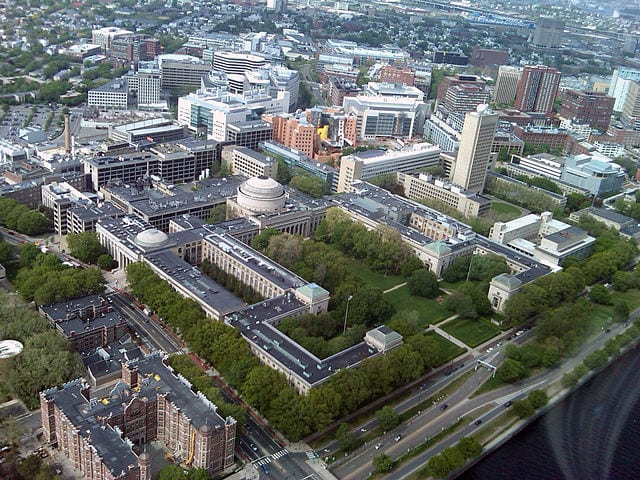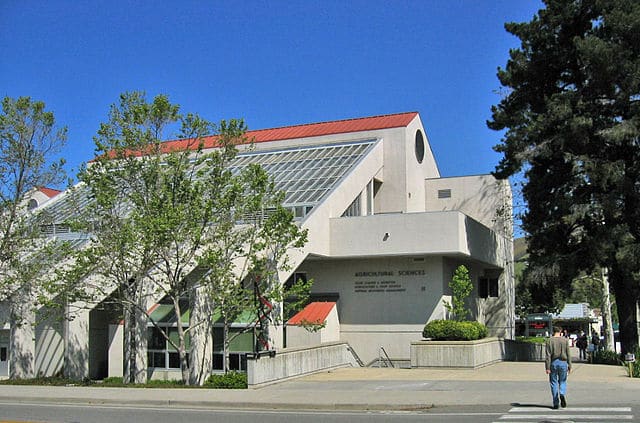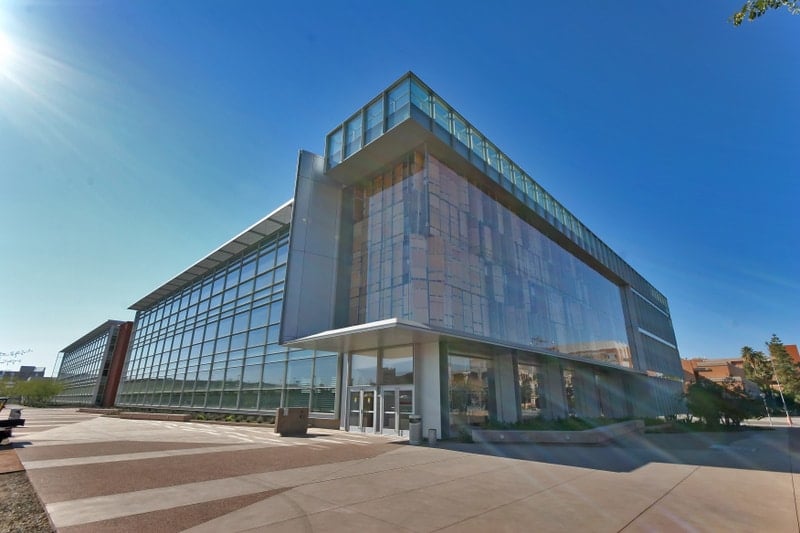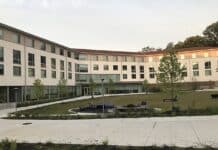The United States is home to some of the most innovative colleges and universities in the world.
However, innovation and prestige are not mutually exclusive; many of the most innovative schools happen to be among the best higher education institutions worldwide.
So what makes a school innovative? For this list, we looked at unique curricular structure as well as groundbreaking research.
Many of these schools have a unique approach to higher education, often promoting a non-conventional classroom style of learning.
Other schools consistently make scientific & research advancements that have changed the world for the better.
So which schools make the list for the most innovative colleges and universities in the US? Here is our take for 10 of the most innovative colleges in the country.
Goddard College (Plainfield, VT)

Goddard College, founded in 1938, has a very different approach to education than most other colleges.
The college is particularly famous for its low-residency program. That program builds on the ideas of legendary educator John Dewey who argued in favor of intricate links between experience and education.
Through this program, students are given an 8-day intensive residency on the campus for each semester. This is followed by a semester that lasts for 16 weeks.
This is all done in close collaboration with a faculty advisor. Through this program, students are made in charge of the type of research they will do.
Students are allowed to design studies around their interests. The 8-day residency program includes interactions with alumni, staff, students, and faculty advisors.
All of this is made possible through an award-winning faculty consisting of experts. This customization of a curriculum allows for more one-on-one interactions and a better learning environment.
This method was pioneered to meet the needs of adult students that have parental and family obligations.
This allows them to get real-world experience as well as education. The low-residency model was pioneered in 1963 and has been a success ever since.
Massachusetts Institute of Technology (Cambridge, MA)

Massachusetts Institute of Technology (MIT) is one of the most prestigious universities in the world. It is revered as one of the best science universities in the world due to its consistent dedication towards research. Just a few of its most recent accomplishments include:
2010: Designing computer techniques that can decipher ancient languages
2011: Designing a radar system that can see past walls at a distance of 60 feet
2012: Discovering a new state of matter called Quantum Spin Liquid
2013: Designing a process that produces oxygen
2014: Designing a paper strip test for diagnosing the Ebola virus
2016: Recording the first gravitational waves ever in conjunction with Caltech and other institutions
2018: Designing the first plane that relies on ion-flow instead of moving parts, culminating in a steady flight
These accomplishments show how the university is still advancing in the field of science.
However, it became famous during World War II. The Radiation Laboratory at MIT, so named to avoid suspicion worked on Radar, accomplished wonders. Through the innovations made in that field, enemy aircraft and movements were more accurately detected.
Today, MIT is ranked as the best college for physics and the 2nd best for natural sciences, economics, and business.
Bennington College (Bennington, VT)
Bennington College has integrated its classroom studies with annual field experience.
Each year, students at Bennington are given the option to choose from different fieldwork experiences. These can impart real-world experiences and “work-based competency development.”
Students are helped throughout their experience by the Office of Career Development and Fieldwork Team. The academic advisor allows students to choose from a large variety of work and learning experiences.
The program includes:
- Summer or winter internships
- Fellowships that include entrepreneurship, theater, or public services
- Campus work that is eligible as work experience
- Community or volunteer activity
- Study away programs
- Advanced research or independent study
- Apprenticeships or professional certifications
Students are mandated to complete, at least, a single internship and can’t repeat any of the fieldwork experience options. They can only do the latter in very specific circumstances.
The total number of hours of fieldwork to be completed each year number 200. This means 6 weeks of full-time work. The typical completion of fieldwork is done through the winter term, although students can fulfill their obligations year-round.
The New School (New York, NY)

What makes The New School so innovative? One could point to their special focus on the arts; few specialty programs have made as much stride in the last decade as their Mannes College of Music or the their prestigious Parsons School of Design.
You could also point to the New School’s culture – among the most liberal colleges in the US, the school is committed to fostering unique, experiential growth.
However, what we find most interesting about the New School is their embracing of individualized learning.
To that end, one feature of The New School making it stand out among its peers is their “student-directed curriculum.”
In this curriculum, undergraduates of The New School doe not participate in general ed required courses; rather, students can explore a number of areas they are interested in before committing to a major.
This maverick attitude towards helping a student figure out their best future is innovative, if for no other reason than most other schools require a hefty load of gen-ed classes to graduate.
Evergreen State University (Olympia, WA)

Evergreen State takes a different approach; they allow for students to take a single class worth up to 16 credits.
There are no majors in this program; students have the flexibility to pursue a number of curricular interests.
To this end, students do explore a central theme that’s important to them. There are also 2-6 credit single-subject courses. However, they have to be complementary to what the central theme of your study is.
One example Evergreen State uses to illustrate this unique concept is Earth Dynamics. This is a program that integrates Economics, Geology, and World History. The three subjects combine to show how humans have changed local environments and global processes. This allows a deeper exploration of the underlying theme through an integration of these subjects.
Additionally, Evergreen State has innovation stemming from its pioneering culture, as it is one of the most important liberal campuses worldwide.
Reed College (Portland, OR)
Now before you think that this institution doesn’t mark its students at all, hold your horses.
True, there are specifically no letter grades at Reed College. To be very specific, students are marked through grades, but they’re never issued by the Registrar’s office. This is due to the underlying philosophy of the school that letter grades divide students.
However, that doesn’t mean students that are failing are allowed to do so without consequence. Letter grades are never distributed to students if they remain at satisfactory levels. These are grades at C or higher. However, grades below that are reported to the student directly or their advisor.
All grades can be obtained via student advisors or their course instructors. A transcript can also be ordered from the registrar’s office. However, the obtainment of the grades is not mandatory.
Individual conferences are held between students and instructors so that evaluations are much more useful than a letter grade. Comments are provided at the end of the conference if the student has scored below the expected standard.
The progress of the student is viewed six times every single year. This amounts to four-weekly conferences; twice each semester, and at the end.
Worcester Polytechnic Institute (Worcester, MA)

At Worcester Polytechnic Institute (WPI), you get to travel abroad and take part in a project. The university encourages the participation of all its students in this Global Project program. They have access to nearly 50 centers around the world.
Students will receive a scholarship of $5,000 starting with the class of 2022 to complete a project abroad. The centers of learning are positioned in cities, mountainous areas, and even in villages. The projects can range from capstone project, art projects, to humanitarian projects.
This allows for a huge cultural exchange as well as language immersion.
Additionally, as the school is is a technical institute, WPI consistently demonstrates research that has pushed engineering and technology forward. The school has even recently launched an Innovation & Entrepreneurship Initiative to foster students’ creative enterprises.
Colorado College (Colorado Springs, CO)
What Makes CC innovative? At Colorado College, all students participate in the Block Plan, a curricular innovation unique to this prestigious liberal arts colleges.
For three and a half weeks, a student focuses entirely on one subject matter in a classroom setting.
Contrast this to a traditional college program where a student simultaneously takes anywhere from 3-7 classes, and you’ll see what makes this so unique.
So why does Colorado College do this? In a word, focus: when students focus on one subject, rather than many, for an extended period of time, they are more likely to understand, retain, and apply the subject matter.
California Polytechnic State University (San Luis Obispo, CA)

Recognized as one of the country’s best institutes, Cal Poly San Lui Obispo provides one of the best returns on investment of any school in California. Their philosophy of Learn by Doing allows students to put their knowledge to the test.
One innovative feature of Cal Poly is their Innovation Sandbox, a center for collaboration in which students are encouraged to “play” with new ideas, technologies, prototypes, and more.
Very unique to Cal Poly San Obispo is their Dairy Innovation Institute. This college promotes Dairy Research, Education, and practices. Believe it or not, students here study the science behind cheese as well as general dairy manufacturing processes and technologies.
Additionally, the school has become a leader in developing student enterprise through their Center for Innovation and Entrepreneurship. Participating members of this center are given guidance not just on fostering ideas, but also through business execution & logistics.
Arizona State University (Tempe, AZ)

For decades, Arizona State has been a pioneer in technology. Not only has it funded hundreds of startups, but issued 2700 invention disclosures and granted thousands of innovative patents.
ASU has a number of specific projects that are notable for their unique innovations.
One is the Knowledge Enterprise Development Program. It advances research and innovation and strategic partnerships. It also helps to forward entrepreneurs through international development.
The main secret of their success is the encouragement of interdisciplinary research. Through this emphasis on interdisciplinary research, it has grown to become a leading research institute.
Not just that, the Knowledge Enterprise Development Program encourages a lot of interdisciplinary projects. It is praised for its out-of-the-box projects, including a recent study has allowed them to combine engineering and biology to analyze protein structures.
Another one of ASU’s many innovations is Project Hieroglyph. It shines a light on the concept that science fiction can serve as inspiration for innovation. While science fiction and fact have been influencing each other for the longest time, this project explores that more deeply.
This project challenges students to think more closely about inventions that can be made in the future. Hence, it puts their imagination and knowledge to the test. It allows them to take inspiration from their own lives, their reading habits, their love of sci-fi, etc.














